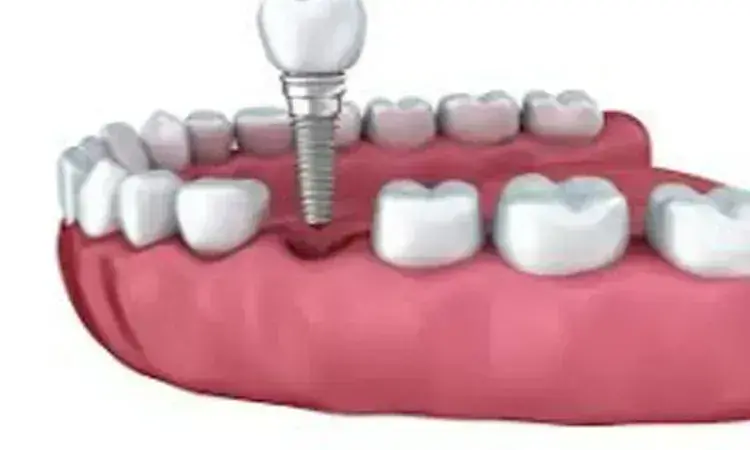- Home
- Medical news & Guidelines
- Anesthesiology
- Cardiology and CTVS
- Critical Care
- Dentistry
- Dermatology
- Diabetes and Endocrinology
- ENT
- Gastroenterology
- Medicine
- Nephrology
- Neurology
- Obstretics-Gynaecology
- Oncology
- Ophthalmology
- Orthopaedics
- Pediatrics-Neonatology
- Psychiatry
- Pulmonology
- Radiology
- Surgery
- Urology
- Laboratory Medicine
- Diet
- Nursing
- Paramedical
- Physiotherapy
- Health news
- Fact Check
- Bone Health Fact Check
- Brain Health Fact Check
- Cancer Related Fact Check
- Child Care Fact Check
- Dental and oral health fact check
- Diabetes and metabolic health fact check
- Diet and Nutrition Fact Check
- Eye and ENT Care Fact Check
- Fitness fact check
- Gut health fact check
- Heart health fact check
- Kidney health fact check
- Medical education fact check
- Men's health fact check
- Respiratory fact check
- Skin and hair care fact check
- Vaccine and Immunization fact check
- Women's health fact check
- AYUSH
- State News
- Andaman and Nicobar Islands
- Andhra Pradesh
- Arunachal Pradesh
- Assam
- Bihar
- Chandigarh
- Chattisgarh
- Dadra and Nagar Haveli
- Daman and Diu
- Delhi
- Goa
- Gujarat
- Haryana
- Himachal Pradesh
- Jammu & Kashmir
- Jharkhand
- Karnataka
- Kerala
- Ladakh
- Lakshadweep
- Madhya Pradesh
- Maharashtra
- Manipur
- Meghalaya
- Mizoram
- Nagaland
- Odisha
- Puducherry
- Punjab
- Rajasthan
- Sikkim
- Tamil Nadu
- Telangana
- Tripura
- Uttar Pradesh
- Uttrakhand
- West Bengal
- Medical Education
- Industry
Survival rate of Metal-ceramic and monolithic zirconia implants 100% after 5 years, reveals study

The survival rate of Metal-ceramic and monolithic zirconia implants is 100% after 5 years, reveals a study published in the Journal of Clinical Medicine.
The current study aimed to present the clinical and radiological outcomes of monolithic zirconia superstructures compared to the metal–ceramic ones in the All-on-4 concept for the prosthetic rehabilitation of the maxillae. A total of 30 patients were subdivided into groups according to their superstructure type (metal–ceramic (n = 15) or monolithic zirconia (n = 15)). All implants were functionally loaded within 24 h after insertion with provisional acrylic superstructures. Prosthetic complications, marginal bone loss, plaque accumulation, probing pocket depth, bleeding on probing, and bite force were documented over 5 years. Marginal bone loss around the implants of the ceramic group remained well over the five years (1.21 ± 0.23 mm).
However, marginal bone loss was significantly lower around the implants in the monolithic zirconia group (0.22 ± 0.14 mm) (p < 0.001). Bleeding on probing, plaque accumulation, and probing pocket depth values were correlated with marginal bone loss. Among all evaluated parameters, no differences could be detected in terms of the angulation of the implants. Detachment or chipping was observed in seven cases in the metal–ceramic superstructure group. In all cases, dentures were removed and repaired in the laboratory. In the monolithic zirconia group, chipping was detected after one year in two cases, after two years in four cases, and after five years in one case and could be managed by polishing in situ. Monolithic zirconia superstructures presented superior results regarding the parameters evaluated.
Reference:
Ayna M, Jepsen S. A Retrospective Evaluation of 5 Years of Clinical Results of Metal–Ceramic vs. Monolithic Zirconia Superstructures in Maxillary All-on-4TM Concept. Journal of Clinical Medicine. 2024; 13(2):557. https://doi.org/10.3390/jcm13020557
Dr. Shravani Dali has completed her BDS from Pravara institute of medical sciences, loni. Following which she extensively worked in the healthcare sector for 2+ years. She has been actively involved in writing blogs in field of health and wellness. Currently she is pursuing her Masters of public health-health administration from Tata institute of social sciences. She can be contacted at editorial@medicaldialogues.in.
Dr Kamal Kant Kohli-MBBS, DTCD- a chest specialist with more than 30 years of practice and a flair for writing clinical articles, Dr Kamal Kant Kohli joined Medical Dialogues as a Chief Editor of Medical News. Besides writing articles, as an editor, he proofreads and verifies all the medical content published on Medical Dialogues including those coming from journals, studies,medical conferences,guidelines etc. Email: drkohli@medicaldialogues.in. Contact no. 011-43720751


